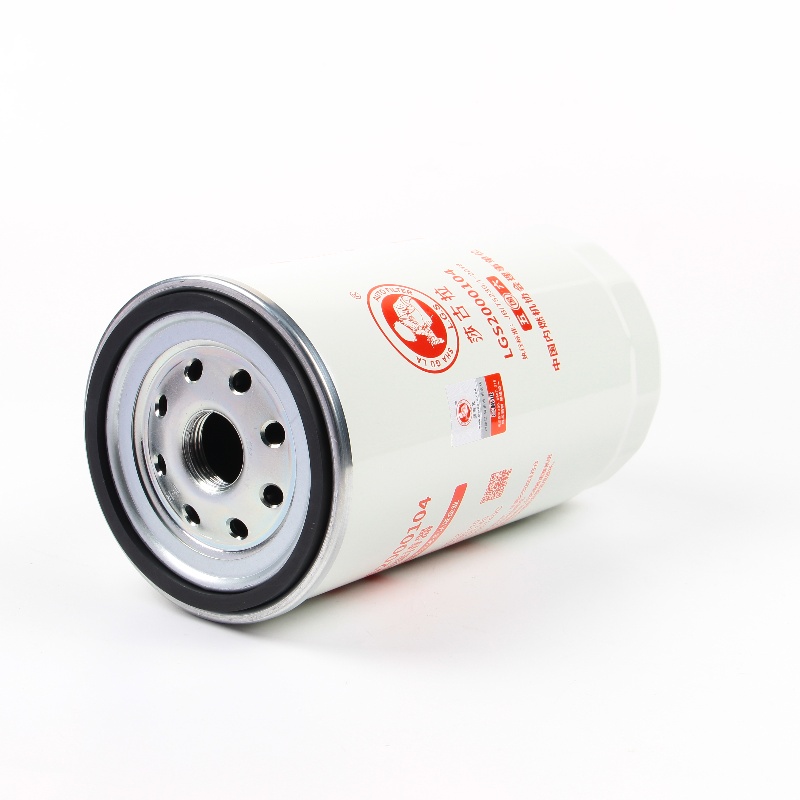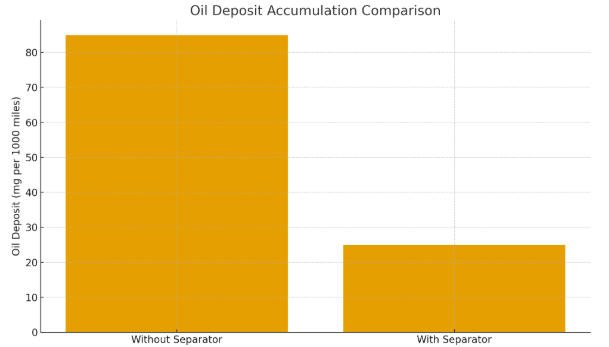When an engine runs, a mixture of oil mist and blow-by gases is pushed out of the crankcase and routed back into the intake system. While this process helps reduce emissions, it creates a new problem: oil droplets enter the intake manifold and slowly build up carbon deposits. This is where an High-Efficiency Oil Water Separation Filter—often known as a catch can or oil-air separator—plays an essential role. It captures oil mist before it re-enters the intake, keeping your engine cleaner and running more efficiently.
Modern turbocharged engines are especially prone to oil vapor recirculation. According to test data from multiple automotive engineering reports, turbo engines generate 2–3 times more oil mist in the PCV (Positive Crankcase Ventilation) system than naturally aspirated engines. Without an oil separator, the intake manifold, intercooler, valves, and pistons accumulate deposits much faster.

Why Oil Vapor Is a Critical Issue
Blow-by gases contain tiny oil droplets that behave differently from liquid oil. Even high-quality intake systems cannot fully prevent these microscopic particles from entering the combustion chamber. Over time, oil vapor leads to:
-
Thick deposits on intake valves
-
Reduced airflow efficiency
-
Knock tendency increase
-
Lower combustion efficiency
-
Premature turbocharger wear
Studies show that just 1 gram of oil entering the intake can reduce octane ratings by 1–2 points due to oil-fuel interaction, increasing the chance of pre-ignition in modern direct-injection engines.
Major Benefits of Using an Oil Separator
1. Reduced Carbon Buildup
Oil separators capture vapor before it solidifies into carbon. This reduces cleaning frequency for:
Data from fleet vehicles shows that cars equipped with an oil separator experience 45–70% less carbon buildup over 50,000 miles.
2. More Stable Engine Performance
Oil contamination disrupts the air-fuel mixture. Removing excess oil vapor results in:
This effect is especially evident in turbocharged engines where airflow precision is critical.
3. Longer Engine and Turbocharger Lifespan
Excess oil in the intercooler reduces cooling efficiency by coating inner walls. Test results indicate that oil film as thin as 0.1 mm reduces heat transfer efficiency by 12–18%.
Quality Oil Water Separation Filter For Turbocharged Engines:
This effectively extends turbocharger life.
Visual Data: Oil Deposit Comparison
The figure below illustrates a comparison of oil deposits per 1,000 miles with and without an oil separator (sample industrial test data):

As shown, installing an Automotive Oil Water Separation Filter significantly reduces the amount of oil entering the intake system, helping to maintain a cleaner combustion environment.
4. Improved Fuel and Airflow Efficiency
Oil droplets adhering to intake pathways reduce effective airflow diameter. According to airflow bench tests:
An oil separator maintains:
5. Enhanced Engine Reliability for High-Load Driving
Vehicles frequently pulling loads, driving uphill, or running at high RPM produce more blow-by gases. Engines in this category benefit the most from oil separation systems.
Which Vehicles Benefit Most?
Oil separators are highly recommended for:
-
Turbocharged gasoline engines
-
Direct-injection (GDI) engines
-
Truck and SUV engines under heavy load
-
Modified / tuned cars
-
Performance models (EcoBoost, TFSI, GDI, T-GDI, etc.)
Are Oil Separators Difficult to Maintain?
Not at all. Most models only require:
-
Emptying the can every 3,000–5,000 miles
-
Cleaning the filter or internal baffle periodically
-
Replacing O-rings annually (if applicable)
Maintenance takes less than 5 minutes and prevents thousands in future repairs.
Is It Worth It?
An oil separator is a small component that makes a big difference in engine longevity and performance. By preventing oil vapor from circulating back into the intake, it helps reduce carbon buildup, improve airflow, protect turbochargers, stabilize fuel combustion, and significantly lower long-term maintenance costs. For turbocharged, direct-injection, and high-performance engines, it is one of the most cost-effective upgrades available.
















 Réseau IPv6 pris en charge
Réseau IPv6 pris en charge
